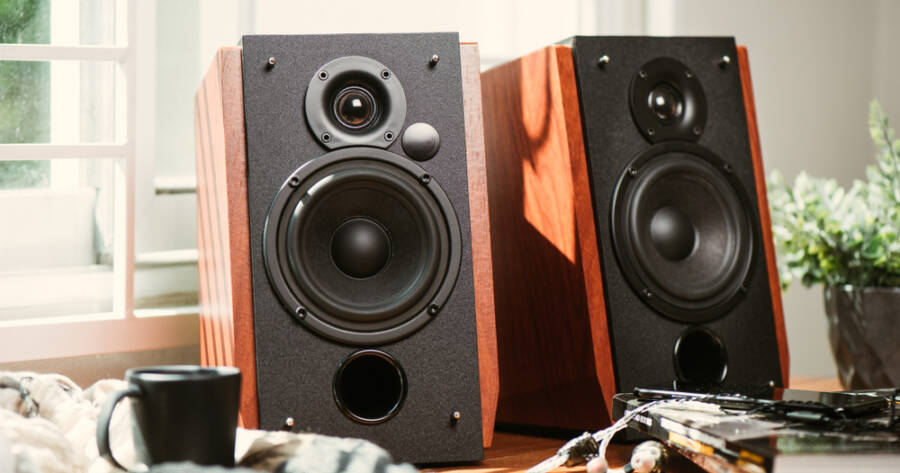Creating a rich, room-filling sound experience at home doesn’t have to mean spending thousands on high-end equipment. With a bit of planning and smart choices, it’s possible to build a stereo setup that captures the warmth and depth of your favorite music without straining your wallet. Whether you’re rediscovering vinyl, streaming playlists, or upgrading from basic Bluetooth speakers, the key lies in understanding what truly makes a home stereo immersive, and where to spend (and save) wisely.
Start with the Right Foundation: The Amplifier or Receiver
Every great home stereo starts with a strong foundation, and that means choosing the right amplifier or receiver. The amplifier is the heart of your system — it powers your speakers and determines how clean and dynamic your sound will be.
For most listeners, an integrated amplifier or stereo receiver provides a perfect balance of power, simplicity, and connectivity. Receivers often include built-in tuners, Bluetooth, and multiple inputs for streaming devices or turntables. Many affordable models from brands like Yamaha, Denon, and Sony deliver impressive performance for the price, offering clean amplification and future-proof inputs for expanding your setup later.
If you prefer a minimalist route, consider a compact Class-D amplifier. These small, energy-efficient units are surprisingly capable and pair well with bookshelf speakers in smaller rooms. The goal is to match your amp’s output power with your speakers’ recommended wattage — too little power leads to distortion, while too much can damage your speakers.
Speakers: The Biggest Impact for Your Dollar
Speakers shape your sound more than any other component, so they deserve careful consideration. You don’t need massive floor-standing models to get immersive audio. In fact, well-designed bookshelf speakers can produce excellent clarity, stereo imaging, and bass response when properly placed.
For smaller rooms or apartments, bookshelf speakers offer the best mix of affordability and performance. Position them at ear level and a few feet apart for an even soundstage. Using stands or isolation pads helps minimize vibration and improve clarity. In larger spaces, adding a subwoofer can provide extra low-end depth without overpowering the room.
When comparing speakers, trust your ears more than brand names. Look for models known for balanced sound rather than exaggerated bass or treble. Reading reviews and listening in person (when possible) can help you find a pair that fits your taste and space.
Room Acoustics: The Overlooked Ingredient
Even the best gear can sound disappointing in a poorly treated room. Hard surfaces like bare walls, windows, and tile floors reflect sound, creating harsh echoes that distort what you hear. Soft materials — rugs, curtains, and upholstered furniture — help absorb reflections and balance acoustics naturally.
Speaker placement is equally important. Avoid pushing speakers directly against the wall, which can create boomy bass. Instead, give them a little breathing room — usually 6 to 12 inches from the wall — and angle them slightly toward your main listening spot. Experimenting with placement can make a bigger difference than you might expect, often improving clarity without spending a dime.
If you’re serious about fine-tuning your space, consider basic acoustic panels or diffusers. Affordable DIY options, like fabric-covered foam or even strategically placed bookshelves, can significantly improve sound balance.
Adding Modern Touches: Streaming and Connectivity
Modern home stereos don’t need to be old-fashioned. Affordable streaming devices and adapters can bring high-quality wireless playback to any setup. Small network streamers or Bluetooth receivers connect easily to your amplifier, letting you enjoy music from your phone, tablet, or laptop.
For the best sound, look for Bluetooth devices that support advanced codecs such as aptX or AAC. If you prefer Wi-Fi streaming, platforms like Chromecast Audio (used models still circulate) or dedicated streamers from companies like WiiM or Audioengine deliver high-resolution sound and multi-room capability without a steep cost.
Vinyl lovers can integrate a turntable easily too — just ensure it includes a built-in phono preamp or pair it with your receiver’s phono input. Mixing analog and digital sources gives your system flexibility and character.
Upgrading Gradually and Thoughtfully
Building a great stereo system doesn’t have to happen all at once. Starting with a modest setup and improving components over time is often the smartest (and most satisfying) approach. Begin with the essentials — a quality amplifier and speakers — and upgrade as you learn what you value most in your listening experience.
Swapping out cables or accessories rarely brings dramatic improvements; instead, focus on core upgrades like better speakers or a dedicated DAC (digital-to-analog converter) when your budget allows. Over time, small adjustments — new placement, added subwoofer, or improved source components — can elevate your system far beyond its original cost.
Immersive Sound for Real-World Budgets
Building an immersive home stereo isn’t about chasing the most expensive equipment — it’s about making deliberate choices that match your space, your habits, and your ears. With the right combination of amplifier, speakers, and thoughtful setup, even an affordable system can deliver depth, detail, and emotion that outshines any all-in-one gadget.
The best systems grow with you — tuned over time, refined by curiosity, and built with intention. When music fills your room naturally and makes you pause to listen, you’ll know you’ve struck the perfect balance — all without breaking the bank.

